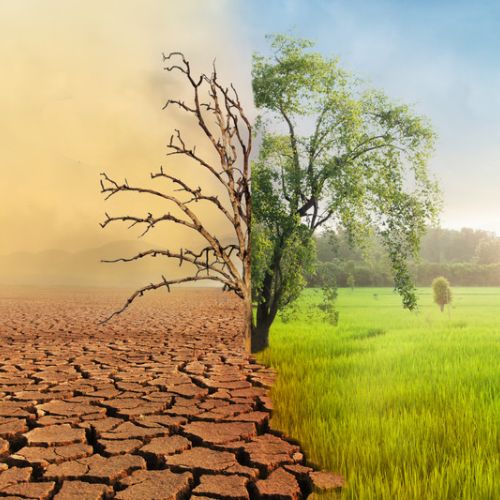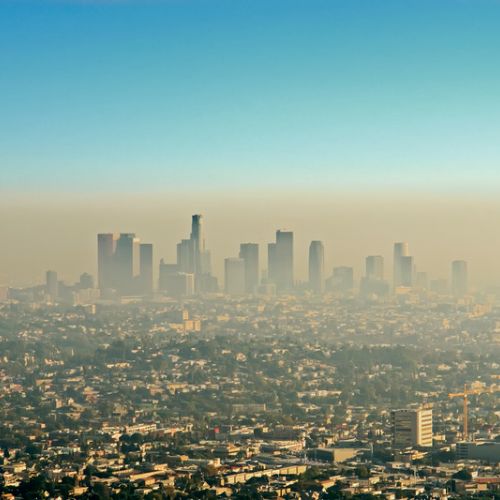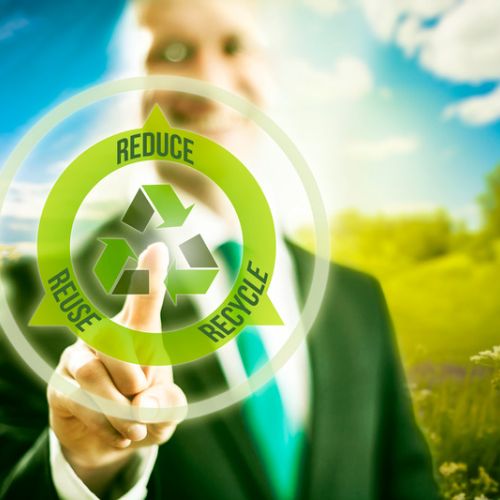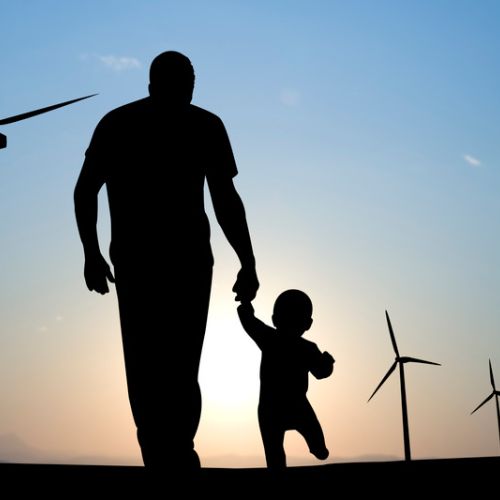Hey there! Today, let’s dive into a topic close to my heart and that is the importance of protecting the environment. Yep, I’m putting on my hippie hat… Our planet is an incredible place, filled with life, amazing landscapes, and awe-inspiring crazy natural wonders.
In recent years, we’ve witnessed the devastating effects of climate change, pollution, deforestation, and other environmental challenges. Don’t you think It’s time for us to take action and make a positive difference?
In today’s post, I want to explore why environmental protection is crucial, share some facts, and maybe even a practical tip or two to inspire and empower you. There are five areas I’m going to focus on.
5 Important Areas To Protecting The Environment
- Preserving Biodiversity
- Combating Climate Change
- Ensuring Clean Air and Water: Lifelines of Survival
- Conserving Natural Resources: Sustainable Living
- Protecting Future Generations: Our Legacy
Let’s take a deeper dive into each of the five…
Preserving Biodiversity: A Tapestry of Life
Imagine walking through a lush forest, surrounded by vibrant colors, chirping birds, and a symphony of life. Our planet’s biodiversity is a masterpiece, comprising millions of species interwoven in a delicate balance.
There’s a problem though… human activities have led to habitat destruction, pollution, and climate change, resulting in the alarming loss of species. By protecting the environment, we safeguard this precious tapestry of life, ensuring the survival of diverse ecosystems and the countless benefits they provide, from clean air and water to vital resources and medicines. And by the way, tapestry is not a word I’d normally use. I just couldn’t find the right words to use in my tiny little brain. So tapestry it is.
Biodiversity refers to the variety of life forms on Earth, encompassing the genes, species, and ecosystems that make up our planet. It is a fundamental component of our natural world, and its significance cannot be overstated.
Every species, from the smallest microorganism to the majestic apex predator, plays a unique role in maintaining the balance of ecosystems. Like threads in a tapestry (yes, I used it again), these species are interconnected, and the removal or decline of one can have cascading effects on the entire system.
One of the primary threats to biodiversity is habitat destruction. As human populations expand, forests are cleared, wetlands drained, and natural habitats transformed into agricultural lands or urban areas. This disruption displaces countless species, leading to their decline or extinction.
The loss of even a single species can have far-reaching consequences, disrupting the intricate web of interactions that sustains ecosystems. For example, the decline of pollinators like bees and butterflies can hinder the reproduction of plants, impacting food production and the overall health of ecosystems.
Pollution also poses a significant threat to biodiversity. Chemical pollutants released into the air, water, and soil can contaminate habitats and disrupt the delicate balance of ecosystems. For instance, oil spills in oceans devastate marine life, affecting fish populations, seabirds, and other marine organisms.
Similarly, the use of pesticides in agriculture can harm beneficial insects and birds, leading to imbalances in the food chain and ecosystem functioning. Oh, and this may just be my opinion, but the dispersants we use in oil spills probably have just as much damaging effects as do the spills themselves. I think dispersants require a bit more knowledge. Let’s dig in a bit further on dispersants…
Dispersants used in oil spills are chemicals designed to break up oil into smaller droplets, which can help accelerate the natural degradation of the oil and prevent its spread on the water surface. However, the use of dispersants in oil spills is a complex topic, and the environmental impact depends on various factors.
When dispersants are properly used according to approved protocols and guidelines, they can be effective in reducing the impact of oil spills. By breaking down the oil into smaller droplets, they increase the surface area available for microbial degradation, allowing natural processes to take place more rapidly.
However, dispersants themselves can have potential negative effects on the environment and marine life. Some studies suggest that dispersants can be toxic to certain species, especially early life stages of fish and invertebrates. Dispersants can also increase the exposure of organisms to the toxic components of oil by facilitating their uptake.
The long-term ecological impact of dispersants is still a subject of ongoing research, and there is a need for further studies to better understand their effects. Environmental agencies and organizations should carefully evaluate the use of dispersants, considering factors such as the type and amount of oil, the location of the spill, and the potential risks to the ecosystem.
Ultimately, the decision to use dispersants in an oil spill response involves a trade-off between the immediate benefits of reducing the spread of oil and the potential risks they may pose to the environment.
Efforts are continually being made to develop and improve dispersant formulations that are more effective and less harmful to the environment, while also considering alternative response options.
Climate change, fueled by human activities such as the burning of fossil fuels, poses an additional threat to biodiversity. Rising temperatures, changing rainfall patterns, and extreme weather events can disrupt ecosystems and alter the distribution and behavior of species.
Polar ice caps are melting, threatening the survival of species like polar bears and seals, while coral reefs, vital marine ecosystems, are bleaching due to increased ocean temperatures.
Preserving biodiversity is not only a matter of ethical responsibility but also one of self-interest. Ecosystems provide a wide range of services that are essential for human well-being. Forests act as natural carbon sinks, mitigating climate change by absorbing carbon dioxide from the atmosphere.
Wetlands filter and purify water, ensuring a clean and reliable water supply. Biodiversity-rich areas also offer potential sources of new medicines, with countless plant and animal species holding the key to innovative treatments for diseases.
So, what can we do to preserve biodiversity? First and foremost, we must prioritize conservation efforts, protecting and restoring natural habitats. This includes establishing protected areas, promoting sustainable land-use practices, and supporting initiatives that conserve endangered species.
Additionally, reducing our ecological footprint by adopting sustainable practices in our daily lives, such as reducing waste, conserving water, and supporting sustainable agriculture, can make a significant difference.
Education and awareness also play a crucial role. By understanding the importance of biodiversity and the threats it faces, we can make informed choices and inspire others to take action. Encouraging sustainable practices in businesses, advocating for stronger environmental policies, and supporting organizations dedicated to biodiversity conservation are vital steps towards a more sustainable future.
Preserving biodiversity is paramount for the well-being of our planet and ourselves. By protecting the environment and the countless species that call it home, we ensure the survival of diverse ecosystems and the invaluable services they provide.
Let us appreciate the intricate tapestry of life and work together to safeguard it for present and future generations. I promise you that this is the most times I’ve ever used the word tapestry. I just really can’t find a better word for it.
The choices we make today, both as individuals and as a collective, have the power to shape our planet’s future. Let’s embrace sustainable practices, advocate for change, and hold ourselves accountable.
Remember, every step counts—whether it’s reducing our carbon footprint, supporting conservation efforts, or spreading awareness. Together, we can create a world where humans and nature thrive in harmony, ensuring a beautiful, vibrant Earth for generations to come.
Combating Climate Change: Our Race Against Time
Climate change is undeniably one of the most pressing challenges humanity faces today. The consequences of rising temperatures, extreme weather events, and melting ice caps are becoming increasingly evident around the world.
These changes are largely driven by human-induced greenhouse gas emissions, primarily from the burning of fossil fuels and deforestation. However, there is hope. By taking collective action and making sustainable choices, we can slow down the impacts of climate change and safeguard our future.
Reducing our carbon footprint is a crucial step in combating climate change. Our carbon footprint refers to the total amount of greenhouse gases, particularly carbon dioxide (CO2), that is released into the atmosphere as a result of our activities.
Hold your breath now… Just kidding, don’t hold your breath. However, I wonder if everyone held their breath for say, 5-minutes a day, what if any benefits do you think that would have. Oh, don’t hold your breath for 5-minutes straight. You will definitely pass out before reaching 5-minutes. Seriously though, 8 billion people on the planet breathing out CO2 is something like 40 trillion minutes or something crazy like that. Okay, let me get back to reality here.
Before I went off on a tangent, our activities include burning fossil fuels for electricity, heating, transportation, and industrial processes. By adopting energy-efficient practices and technologies, we can significantly reduce our carbon emissions. I’m still thinking about the breathing while writing this.
Anyway, this can be as simple as replacing traditional incandescent light bulbs with energy-saving LED lights, insulating our homes to conserve energy, and using programmable thermostats to optimize heating and cooling. Businesses can stand to save thousands of dollars just by implementing these three things in their sustainability program.
Embracing renewable energy is an essential aspect of combating climate change. Renewable energy sources such as solar, wind, and hydropower generate electricity without releasing greenhouse gases.
Transitioning to these clean and sustainable energy alternatives not only reduces our carbon emissions but also promotes energy independence and creates new job opportunities. Installing solar panels on rooftops, supporting community wind farms, and advocating for renewable energy policies are all ways we can contribute to the shift towards a low-carbon future.
Advocating for sustainable practices is equally important. This involves supporting environmentally responsible policies and initiatives that prioritize conservation, sustainable agriculture, and waste reduction.
It means choosing products and services from companies that prioritize sustainability and ethical practices. By supporting businesses that are committed to reducing their environmental impact, we send a message that sustainability is a priority for consumers.
Additionally, participating in local environmental initiatives and organizations allows us to contribute directly to positive change in our communities.
Individual actions, no matter how small they may seem, play a significant role in combating climate change. Choosing to walk, bike, or take public transportation instead of relying on private vehicles reduces carbon emissions and promotes cleaner air in our cities. Once my knee surgery is complete, I’ll be back to commuting 13.7 miles each way to work and back home…
Reducing food waste, embracing a plant-based diet, and supporting local and organic agriculture all contribute to lowering greenhouse gas emissions from the food sector. By being mindful of our consumption habits and opting for sustainable choices, we can collectively make a difference.
Education and raising awareness are also key components in the fight against climate change. By understanding the science behind climate change, its impacts on our planet and communities, and the urgency of taking action, we can make informed choices and inspire others to do the same.
Sharing knowledge about climate change through discussions, social media, and educational campaigns helps create a sense of urgency and empowers individuals and communities to take meaningful action. I will be writing more and more articles on climate and the environment in the coming months and even years.
Combating climate change is a race against time, and we all have a part to play. By reducing our carbon footprint, embracing renewable energy, advocating for sustainable practices, and raising awareness, we can make a significant impact.
Our collective actions today will determine the kind of world we leave behind for future generations. Let’s come together and take a stand for a more sustainable and resilient future.
Ensuring Clean Air and Water: Lifelines of Survival
Take a deep breath. Clean air is something we often take for granted, but its importance cannot be overstated. It is an essential component of our well-being, sustaining life and maintaining our health.
Unfortunately, air pollution remains a significant threat to human health in many parts of the world. Industrial emissions, vehicle exhaust, and the burning of fossil fuels release harmful pollutants into the atmosphere, contributing to respiratory diseases, cardiovascular problems, and other health issues.
Similarly, the pollution of our water sources poses a significant challenge. Our water bodies, which should be filled with life and provide us with safe drinking water, are increasingly contaminated. Industrial waste, agricultural runoff, and improper disposal of chemicals and waste all contribute to the degradation of our water systems.
These pollutants harm aquatic life, disrupt ecosystems, and compromise our access to clean and safe water.
To protect these lifelines of survival, it is crucial to promote responsible industrial practices. Industries should prioritize implementing clean technologies and sustainable processes that minimize pollution.
This includes investing in emission control systems, adopting cleaner energy sources, and implementing effective waste management strategies. By reducing their environmental footprint, industries can contribute to cleaner air and water for everyone.
Supporting regulations and policies aimed at reducing pollution is another important step in ensuring clean air and water. Governments play a vital role in setting standards, enforcing regulations, and promoting environmentally friendly practices.
Strong emission standards for vehicles, strict regulations for industrial waste disposal, and incentives for clean energy production are examples of measures that can make a significant difference. As citizens, we can support and advocate for these regulations, urging policymakers to prioritize the protection of our air and water resources.
Individual actions also matter in the quest for clean air and water. By reducing waste, conserving resources, and making sustainable choices in our daily lives, we can contribute to a healthier environment.
Simple actions such as properly disposing of waste, recycling, conserving water, and using eco-friendly products can have a positive impact. Additionally, choosing alternative modes of transportation, such as walking, biking, or using public transit, reduces vehicle emissions and improves air quality in our communities.
Education and awareness are key to fostering a culture of environmental responsibility. By understanding the impact of air and water pollution on our health and ecosystems, we can make informed decisions and advocate for change.
Educating ourselves and others about the sources of pollution, the importance of conservation, and the benefits of sustainable practices helps create a collective understanding and encourages widespread action.
Ensuring clean air and water is crucial for our survival and well-being. By promoting responsible industrial practices, supporting regulations, and reducing waste in our daily lives, we can protect these lifelines.
Collaboration between industries, governments, and individuals is essential to create a cleaner and healthier future for ourselves and future generations. Let’s prioritize the preservation of clean air and water as we work towards a sustainable and thriving planet.
Conserving Natural Resources: Sustainable Living
Have you ever stopped to think about the origins of the products we use in our daily lives? From the clothes we wear to the food we eat, everything we consume is derived from natural resources. Water, minerals, energy – these are the building blocks of our modern world.
However, our current patterns of extraction and consumption are often unsustainable, leading to the depletion of these finite resources, ecological imbalances, and social inequalities.
One approach to addressing this challenge is through the adoption of a circular economy. Unlike the linear “take-make-dispose” model, a circular economy aims to keep resources in use for as long as possible, extracting their maximum value and minimizing waste.
It promotes recycling, reusing, and repurposing materials, reducing the need for raw resource extraction and decreasing the environmental impact of production and consumption. I know if you are a business owner reading this article right now, then you probably just cringed a bit. Make less? There goes the profit… Not necessarily true. Keep reading, things get better I think.
Minimizing waste is a crucial aspect of conserving natural resources. The concept of “reduce, reuse, recycle” serves as a guiding principle for sustainable living. By consciously reducing our consumption and opting for durable and reusable products, we can minimize the strain on natural resources.
Reusing items and materials whenever possible extends their lifespan and reduces the need for new production. Recycling plays a vital role in diverting waste from landfills, allowing valuable materials to be transformed into new products, reducing the demand for virgin resources.
Supporting sustainable businesses is another important step in conserving natural resources. By choosing products and services from companies that prioritize sustainability, we contribute to the demand for environmentally friendly practices.
Sustainable businesses incorporate resource-efficient production methods, utilize renewable energy sources, and prioritize waste reduction and recycling. By supporting these businesses, we encourage others to follow suit, driving positive change across industries.
The conservation of natural resources goes hand in hand with economic growth. A sustainable approach to resource management ensures the availability of resources for future generations, maintaining a healthy and resilient environment.
By embracing sustainable practices, we create opportunities for innovation, job creation, and economic development. Industries that adopt resource-efficient technologies and circular economy principles often find cost savings, increased productivity, and enhanced competitiveness in the long run.
Conserving natural resources also contributes to a more equitable society. Sustainable practices can help address social inequalities by promoting fair resource distribution, reducing environmental degradation in vulnerable communities, and creating opportunities for marginalized groups. By ensuring the sustainable use of resources, we pave the way for a more just and inclusive future.
Individual actions play a significant role in promoting sustainable living and conserving natural resources. By being mindful of our consumption habits, we can make a difference. This includes buying only what we need, choosing products made from recycled or renewable materials, supporting local and sustainable food systems, and reducing our energy and water consumption. Additionally, advocating for policies and initiatives that prioritize sustainable resource management can bring about systemic change.
Conserving natural resources is crucial for a sustainable future. By adopting a circular economy, minimizing waste, and supporting sustainable businesses, we can conserve resources, promote economic growth, and create a more equitable society.
Each of us has the power to make a positive impact through our choices and actions. Let us embrace sustainable living and work together to ensure a thriving planet for generations to come. Let’s try to finish this up.
Protecting Future Generations: Our Legacy
We are all connected through time, linked by the shared responsibility to protect and preserve the planet for future generations. The actions we take today will shape the world our children and grandchildren inherit.
It is our duty to be environmental stewards, safeguarding the natural wonders that have inspired awe and wonder for centuries. By educating ourselves and others, inspiring action, and supporting organizations dedicated to environmental protection, we can create a lasting legacy of sustainability.
Education is a powerful tool in nurturing environmental awareness and fostering a sense of responsibility. By learning about the intricate web of ecosystems, the impact of human activities, and the urgency of environmental challenges, we become equipped to make informed choices.
Education empowers individuals to understand the consequences of their actions and take steps towards a sustainable future. It starts with us, but it doesn’t end there. We must share our knowledge with others, inspiring a collective movement for change.
Inspiration is the spark that ignites action. We can inspire by showcasing success stories of environmental conservation, highlighting the resilience of nature, and demonstrating the positive impact of sustainable practices.
By sharing stories of communities that have transformed degraded lands into thriving ecosystems or individuals who have championed environmental causes, we can inspire others to join the movement. Inspiration can be found in the smallest acts, such as planting trees in a local park or reducing plastic waste, as well as in grand endeavors like advocating for policy changes or supporting renewable energy initiatives.
Supporting organizations dedicated to environmental protection is essential in ensuring a sustainable future. There are countless nonprofits, research institutions, and grassroots movements working tirelessly to safeguard our planet.
By donating our time, resources, or expertise, we contribute to their important work. Whether it’s volunteering for a local conservation project, contributing to scientific research, or supporting campaigns for environmental justice, our support can make a significant difference. These organizations rely on public support to carry out their mission and amplify their impact.
Protecting future generations requires a multi-faceted approach. It involves advocating for policies that prioritize environmental protection, promoting sustainable practices in our daily lives, and addressing global challenges like climate change, deforestation, and pollution.
It is a collective effort that transcends borders and unites people from all walks of life. By coming together, we can create a powerful force for change.
As we strive to protect future generations, we must also instill a love and respect for nature within our children. By exposing them to the wonders of the natural world, we nurture a deep connection and a sense of responsibility.
We can take them on hikes, teach them about the diversity of life, and encourage them to be curious explorers. By fostering this connection, we ensure that future generations will cherish and protect the environment that sustains us all.
Protecting future generations is our legacy. By educating ourselves and others, inspiring action, and supporting environmental organizations, we can shape a sustainable future for our children and generations to come.
The choices we make today have the power to create a positive impact that will reverberate through time. Let us take up the mantle of environmental stewardship and leave a legacy of a thriving planet for future generations to enjoy.
Support Us: Check out our recommended products on Amazon.





